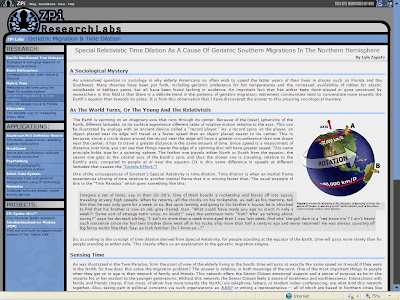A Report and Mile Guide for 21st Century Skills released by The Partnership for 21st Century Skills (a public-private organization with members and partners including Apple, Dell, Cisco, Microsoft, the National Education Association, and the United States Department of Education) presents the outline of a plan “to help schools fully address the educational needs of the twenty-first century” (p. 4). The organization hopes to raise public awareness of the changing needs of America’s future workforce, to provide researched information on changes in the twenty-first century workplace, and to recommend strategies to prepare students for an uncertain future.
The report proposes six key elements of twenty-first century learning: an emphasis on core subjects, an emphasis on learning skills, using twenty-first century tools to develop learning skills, teaching and learning in a twenty-first century context, teaching and learning twenty-first century content, and using twenty-first century assessments to measure twenty-first century skills (p. 4). This combines the strengths of traditional core curricula with a variety of new tools and skills of emerging importance in this century so that students are prepared to use core knowledge to develop tactical, strategic, and problem solving skills that will aid them in adapting to changing conditions in the world of work. The report suggests that by teaching students to build on prior knowledge, incorporate it into and modify existing conceptual frameworks, and conduct self-analysis to guide self-teaching, we can prepare them to prepare themselves for change. It describes information and communication technology (ICT) literacy as resulting from the synthesis of core learning skills (thinking and problem solving, information and communication skills, and interpersonal and self-direction skills) and twenty-first century tools designed to aid in the application of these skills. The site charges teachers with ensuring that their teaching is relevant in both content and delivery, and with incorporating into their curriculum teaching of global awareness, fiscal literacy, and civic literacy.
The findings and recommendations of this report seem sensible and are easy to corroborate (Bates & Phelan, 2002; Leavy & Murnane, 2006; Miners & Pascopella, 2007). I agree with most of what this report suggests, but I cannot say that I find its predictions comforting. Although my profession, teaching, falls into the still local-human dominated category of “complex communication”( Leavy & Murnane, 2006, p. 58), I fear that the administration of my school system will be more of an impediment than and aid in my efforts to ensure that the content I am communicating is relevant to my students’ current modes of learning and future educational needs. In short, I feel that my job specifications will render my work increasingly irrelevant, regardless of my ability. For this reason, I support this organization’s public awareness campaign.
I am not certain, of course, that I agree with every finding of the report. For example, it recommends “high quality standardized testing for accountability purposes and classroom assessments for improved teaching and learning in the classroom” (p. 7). I often get uncomfortable when the term “assessment” comes into the conversation, since it so often translates to massive multiple choice tests. I really feel that this sort of assessment consistently fails to adequately recognize and measure the learning skills that the report recommends emphasizing. Furthermore, I find the idea of standardizing of education as sensible as monoculture in farming; we may turn out a consistent product, but we miss out on variety and leave ourselves vulnerable to competition. If we only grow one kind of potato, a plague or consumer disinterest can wipe out the entire bland species. Standardized education may not promote the divergent thinking that will allow our future workforce, and our economy as a whole, to nimbly innovate in response to changes in the global market.
But I do agree with the importance of ongoing assessment to inform instruction and to measure its effectiveness. I just believe that this work should not be standardized. Rather, assessment of learning requires the sort of careful observation and nuanced expert thinking that only humans (not computers) can adequately accomplish.
The implications for my students and me will depend on how our society, governments, school administrations, and other stakeholders react (if at all) to these observations, predictions, and recommendations. American society and schools tend to be conservative in adopting new thinking, and I predict a certain amount of foot-dragging on the part of school leadership in providing tools, access, and curricular directives to facilitate adoption of these recommendations. I fear that schools may become less and less relevant to the true education of America’s future workforce. By implementing this report’s “Nine Steps to Build Momentum” (p. 8), we can help to spur the process, but there is a good chance that only students who already possess the resources and initiative, by virtue of their home environment, to take charge of their own education will have a fair chance to adapt.
REFERENCES
Bates, R., & Phelan, K. (2002). Characteristics of a globally competitive workforce. Advances in Developing Human Resources, 4(2), 121.
Miners, Z., & Pascopella, A. (2007). The new literacies. District Administration, 43(10), 26–34.
Levy, F., & Murnane, R. (2006). Why the changing American economy calls for twenty-first century learning: Answers to educators' questions. New Directions for Youth Development, 2006(110), 53–62.
Partnership for 21st Century Skills. (n.d.). A report and mile guide for 21st century skills. Washington DC: Author. Retrieved from http://www.21stcenturyskills.org/images/stories/otherdocs/p21up_Report.pdf







